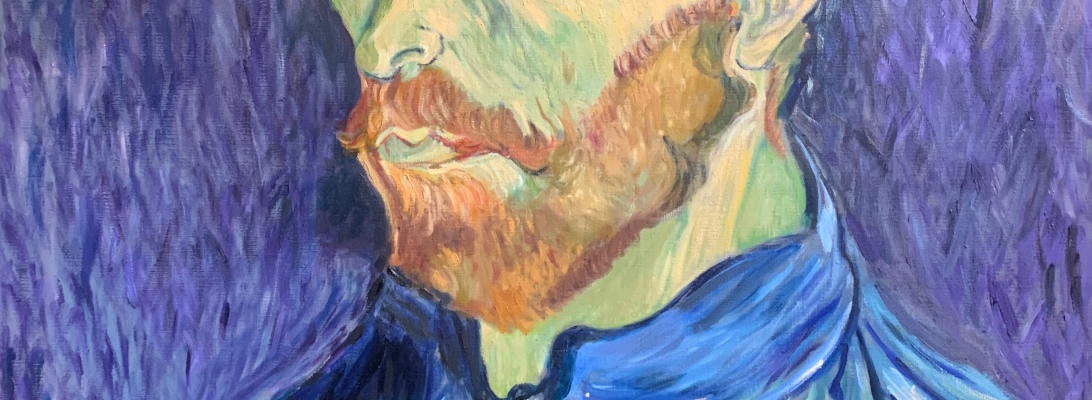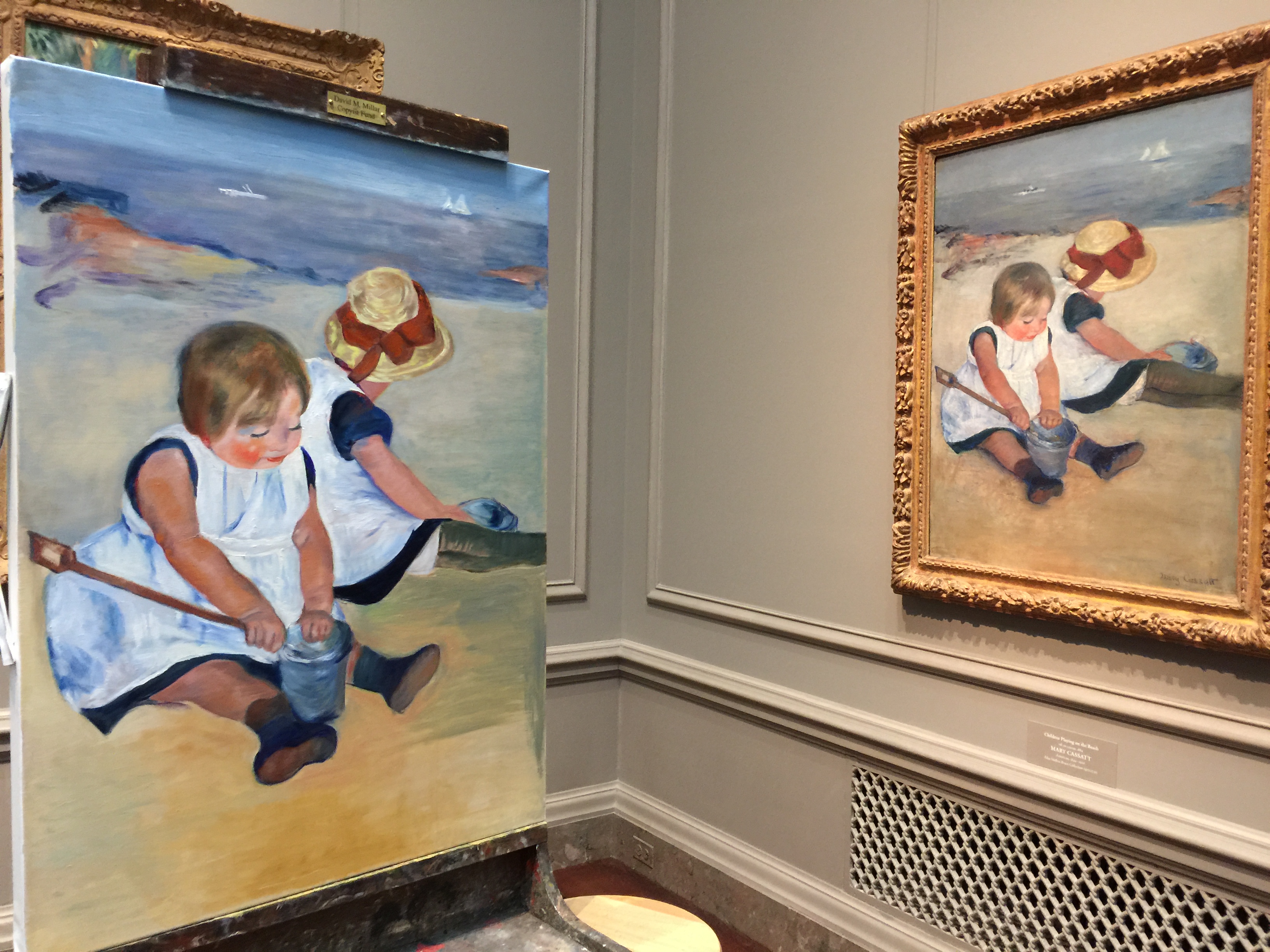The following works are now available for purchase exclusively at Nepenthe Gallery in Alexandria, VA.












The following works are now available for purchase exclusively at Nepenthe Gallery in Alexandria, VA.












I consider myself to be a versatile artist. My first love however, was Classical Realism. Although I’ve been infatuated with Impressionism and the idea of being able to paint through the colorful eyes of VanGogh and Monet and bring to life their vivid canvases, I believe that my discipline from early on has been Classical Realism which has given me the basic understanding of painting and drawing. For me it’s like cooking from my grandmother’s cookbook and learning from the classic recipes that warm your heart and soul.
The Florence Academy of Art in Italy is a classical nineteenth-century school, a forefront of classical realist art education where realistic painting and drawing are emphasized. The curriculum incorporates the teachings of French artist Charles Bargue 1826-1883.
I dreamed of studying in Florence and made that dream a reality in 2018 when I spent 4 months in Italy studying art history, classical figure painting, portraiture, and drawing, as well as still life and anatomy.
Teapot and Plums was the result of the still-life segment of the course. I painted it using a a black-box to set up my subjects in order to achieve the Chairoscuro treatment of light and shade in drawing and painting. I also implemented the life-size method used at the academy.

I have been teaching watercolor classes to students practicing social distancing and wearing masks. You don’t need much equipment and you can complete a painting in a short period of time. What I love about watercolor painting is that you can allow the paint to just flow on the paper. The looser the paint handling the better the painting looks. Simplicity makes painting enjoyable and fun. My students love being able to create and complete a painting in one sitting. Their masterpiece is ready to mat and frame by the end of the class.
Continue reading

I was privileged to be asked by the Education Department at the National Gallery of Art, Washington, D.C. to teach a class to visiting school children. The class consisted of several groups from third to sixth grades. As a copyist, I often have to speak to students who come through with their teachers and chaperons. They are always interested in speaking with a real live artist, even more so than looking at the paintings on the walls. They ask all kinds of questions. “Did you paint all the pictures hanging on the walls?” “Did you do this in one day?” “Do you sell your painting for a million dollars?” The questions are endless and their curiosity is enormous. Although I’m asked some of the same questions occasionally from adults, the children are so much fun. They want to know how did I get to paint at the gallery, how do I begin, how long does it take to finish, at what age did I start painting? This time I finally had an opportunity to interact with them.
The Education Department wanted to develop a program so the children can see the process of a working artist. The course began in the East Wing in front of a painting Both Members of This Club by George Bellows. We talked about how to develop a drawing by studying the shapes of the subject or a model – picking out rectangles, cylinders, circles, squares that form a figure. The Bellows painting has many shapes. The children were fascinated by the bloody boxing figures, which are of course a bit violent for the younger children, but they were really more interested in picking out shapes in the composition than interpreting the meaning behind the subject.
During the second half of the course the children were able to spend time with me in the West Building watching me paint. The Education Department chose the Self Portrait by Vincent van Gogh for demonstration. I showed them how I prepare to begin a copy, from making a grid to drawing, underpainting and finally what they all long anticipated – the actual painting. Of course I didn’t have time to complete the painting for them, but the teaching team requested I finish the painting, which you can see in the photo above.
The background of the original portrait appears blue, but through the use of x-ray imaging, conservators at the NGA have discovered the original background was likely bright purple. Over the years, it seems the red pigment van Gogh used to mix his purple (a light sensitive pigment called “Geranium Lake”) has faded out of the mix he applied for the background. I chose to stay true to the original and paint my copy with a bright purple background.
The third part of Art Around the Corner was painting in the education studio where the children were able to do their own painting.


After a five month break for studies in Italy and other cities in Europe, and after a little rest and relaxation, I will be back at the National Gallery of Art in Washington, DC beginning Tuesday, March 19. The next masterpiece I will copy is The Willows, which is a beautiful landscape by Claude Monet. It’s located in gallery #80.
The NGA acquired The Willows from the Corcoran Collection and I am pleased that it’s now available for me to copy. I chose it because it reminds me of early spring – a season for which most of us are certainly ready. This tranquil painting is full of Monet’s spontaneous brush strokes and subtle impasto. It also features lovely variations of springtime green.
Come see me between 10:30 and 3:45 on Tuesdays starting March 19. I can’t wait to get started!

I’ve dreamt of studying in Italy since I was young. In October, 2018, I finally realized that dream with an intensive course at the Florence Academy of Art.
The school’s main discipline is classical-realism painting and drawing, in the teaching style of Charles Bargue, using the sight-size method but at the same time addressing the creative and professional position of the artist in a contemporary environment. Very careful and exact measurements are found using a plumb line, stick and careful, intense observation in natural light.
Although I won’t always paint in this realistic style, the training and discipline I received will help me paint better in any style I choose. The art history and anatomy studies were like no other, offered right in front of the Old Masters in the many magnificent museums and galleries in Florence. The experience was invaluable.

Recently, while traveling in Europe, I had the opportunity to copy at the Scottish Portrait Gallery in Edinburgh, Scotland. The painting I copied was Lady Charlotte Campbell (1775-1861) by Wilhelm Tischbein, which I chose because I love children’s portraits. It’s quite elaborate and proved a challenge, but there aren’t many portraits of children in the gallery and I was drawn to her innocent, youthful face.
Lady Charlotte Campbell is a very large painting so it was necessary to crop it to be able to complete as much of the portrait as possible within my allotted time.
I’ll never forget the personnel at The Scottish Portrait Gallery. They, and the people of Edinburgh, are extraordinarily friendly and helpful.

Mary Cassatt was the “new woman” of the 19th century – a highly-trained artist who never married. During the Impressionist Period, when female artists were generally dismissed with contempt and confined to painting indoors, she competed admirably with established male artists. She even developed a close friendship with Edgar Degas while living and working in France, and the two became close collaborators for a long period of time.
By 1866, Cassatt had established herself as a uniquely skilled painter of mothers and children. Many believe Children Playing on the Beach was a tribute to her sister, who died in 1882, and was perhaps inspired by a trip she took with her ailing mother to Spain, where the two sought the healing power of the seaside climate. Whatever the muse, this work was clearly special to her.

Children Playing on the Beach is very special to me. It was a favorite of my late husband, who never got to see it in person, and after it was relocated to Gallery #85, I simply couldn’t resist copying it.
I also love this work because it’s one of the best demonstrations of Cassatt’s superior skill with color and process. Palettes were quite limited at that time, and yet she’s able to bring out so many shades that the painting almost appears to echo contrasting moods. For example, the subtle blues of the ocean and sky effectively convey the feeling of cool, possibly dreary weather over the sea, while the vivid blues she uses in the girls’ dresses evoke a feeling of warmth, sunshine and happiness. She was an absolute genius with color.
As most paints do, Mary Cassatt’s have aged over time. I could have chosen to copy Children Playing on the Beach using my interpretation of the colors she used in 1884, but instead I chose to create a copy as close to the current version as possible. As always, it will be a challenge because matching color is one of the most difficult tasks a copyist faces.
I’ve learned a great deal from Mary Cassatt. Her remarkable use of color as well as her ability to manipulate brush and paint to create beautiful strokes is inspirational. Join me in Gallery #85 where I’ll be working on copying another wonderful Impressionist painting The Harbor at Lorient, 1869, by Berthe Morisot.

Recently I was commissioned to copy Woman Holding a Balance by Johannes Vermeer (1632-1675). Vermeer was a Dutch painter who specialized in domestic interior scenes of middle-class life and was perhaps better known for Girl with a Pearl Earring. I was very excited for the opportunity to create this copy as the old masters (particularly the Dutch) and the chiaroscuro style of the 16th century were part of my earliest training and I’m very fond of them. After having completed many commissions in the Impressionist galleries, I welcomed this new challenge.
Several of Vermeer’s masterpieces are on display in an intimate room at the National Gallery of Art in Washington, D.C., where I have been a copyist for the last five years. Because the room is small, copyists are typically prohibited from working inside and must instead work from memory and photographs.
Woman Holding a Balance takes your breath away as you enter the gallery room. It’s a dark painting with a brilliant focal point: a young girl and her fine fur cloak illuminated by sunlight streaming through a nearby window. The young woman appears to weigh jewels and coins with a hand-held scale. Vermeer positions a painting of the Last Judgment behind her on the wall.
Paintings-within-paintings were a common technique of the period, often serving as vessels for symbolism. Perhaps Vermeer includes the Last Judgment to remind us that just as the young woman weighs her riches, in the end God will weigh our choices in life. Maybe greed and vanity should be avoided.
This copy required many layers of glaze to achieve the right amount of contrast between the darks and lights. Vermeer, having been self-taught and influenced by Caravaggio, probably used the same technique. It was a challenge creating this painting during this summer’s heat and humidity. Each layer took quite a while to dry. However, the painting is now complete and ready for delivery. I hope my patron will be happy with it. I certainly am.
A note to my followers: I am currently working on Farmhouse in Provence after Vincent Van Gogh in the National Gallery of Art. I always look forward to seeing fans. Please contact me through this web-site if you would like to visit.
You must be logged in to post a comment.